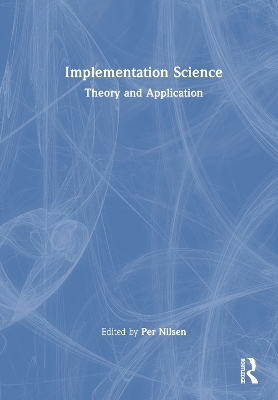
Implementation Science
Routledge (Verlag)
978-1-032-33085-3 (ISBN)
The first part of the book focuses on the theory of implementation science, providing a discussion of its emergence from the evidence-based practice movement and its connections to related topics such as innovation research. It includes chapters looking at a wide range of theories, methods and frameworks currently used in implementation science, and a chapter focusing on suitable theories that could be imported from other fields. The first part also addresses strategies and outcomes of implementation and discusses how researchers can build causal pathways adapted to their study. The second part of the book focuses squarely on putting the theory of implementation science to work in practice, with chapters discussing research methods used in the field and how to select the most appropriate approach. This section also features several chapters presenting in-depth case studies of specific applications.
This multidisciplinary text is an essential resource for graduate students from a range of healthcare backgrounds taking courses on implementation science, as well as researchers from medicine, nursing, public health, allied health, economics, political science, sociology and engineering.
Per Nilsen is a professor of social medicine and public health at Linköping University and a professor of implementation science at Halmstad University, Sweden.
1.Origins of the evidence movement. 2.The historical background of implementation science. 3.Fundamentals of implementation science. 4. A taxonomy of theories, models and frameworks in implementation science. 5.Process models. 6.Determinant frameworks. 7.Implementation theories. 8.Theories and concepts from other fields of potential utility for implementation science. 9.Implementation strategies and outcomes. 10.Causal pathway diagrams to understand how implementation strategies work. 11.Implementation science research methods. 12.Selecting theories, models and frameworks. 13.Applying the Exploration, Preparation, Implementation, Sustainment (EPIS) framework. 14.Applying the Consolidated Framework for Implementation Research (CFIR). 15.Applying the integrated Promoting Action on Research Implementation in Health Services (i-PARIHS) framework. 16.Applying the Tailored Implementation for Chronic Disease (TICD) checklist. 17.Applying the Practical, Robust Implementation and Sustainability Model (PRISM). 18.Applying Capability Opportunity Motivation – Behaviour (COM-B) and the Theoretical Domains Framework (TDF). 19.Applying Normalization Process Theory (NPT). 20.Applying Reach Effectiveness – Adoption Implementation Maintenance (RE-AIM). 21.A critique of implementation science.
| Erscheinungsdatum | 21.04.2024 |
|---|---|
| Zusatzinfo | 18 Tables, black and white; 18 Line drawings, black and white; 1 Halftones, black and white; 19 Illustrations, black and white |
| Verlagsort | London |
| Sprache | englisch |
| Maße | 174 x 246 mm |
| Gewicht | 698 g |
| Themenwelt | Medizin / Pharmazie ► Gesundheitswesen |
| Studium ► Querschnittsbereiche ► Prävention / Gesundheitsförderung | |
| Wirtschaft ► Betriebswirtschaft / Management ► Planung / Organisation | |
| Wirtschaft ► Betriebswirtschaft / Management ► Unternehmensführung / Management | |
| Wirtschaft ► Volkswirtschaftslehre | |
| ISBN-10 | 1-032-33085-6 / 1032330856 |
| ISBN-13 | 978-1-032-33085-3 / 9781032330853 |
| Zustand | Neuware |
| Haben Sie eine Frage zum Produkt? |
aus dem Bereich


